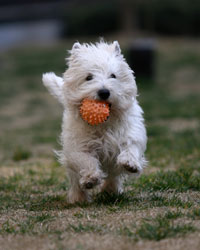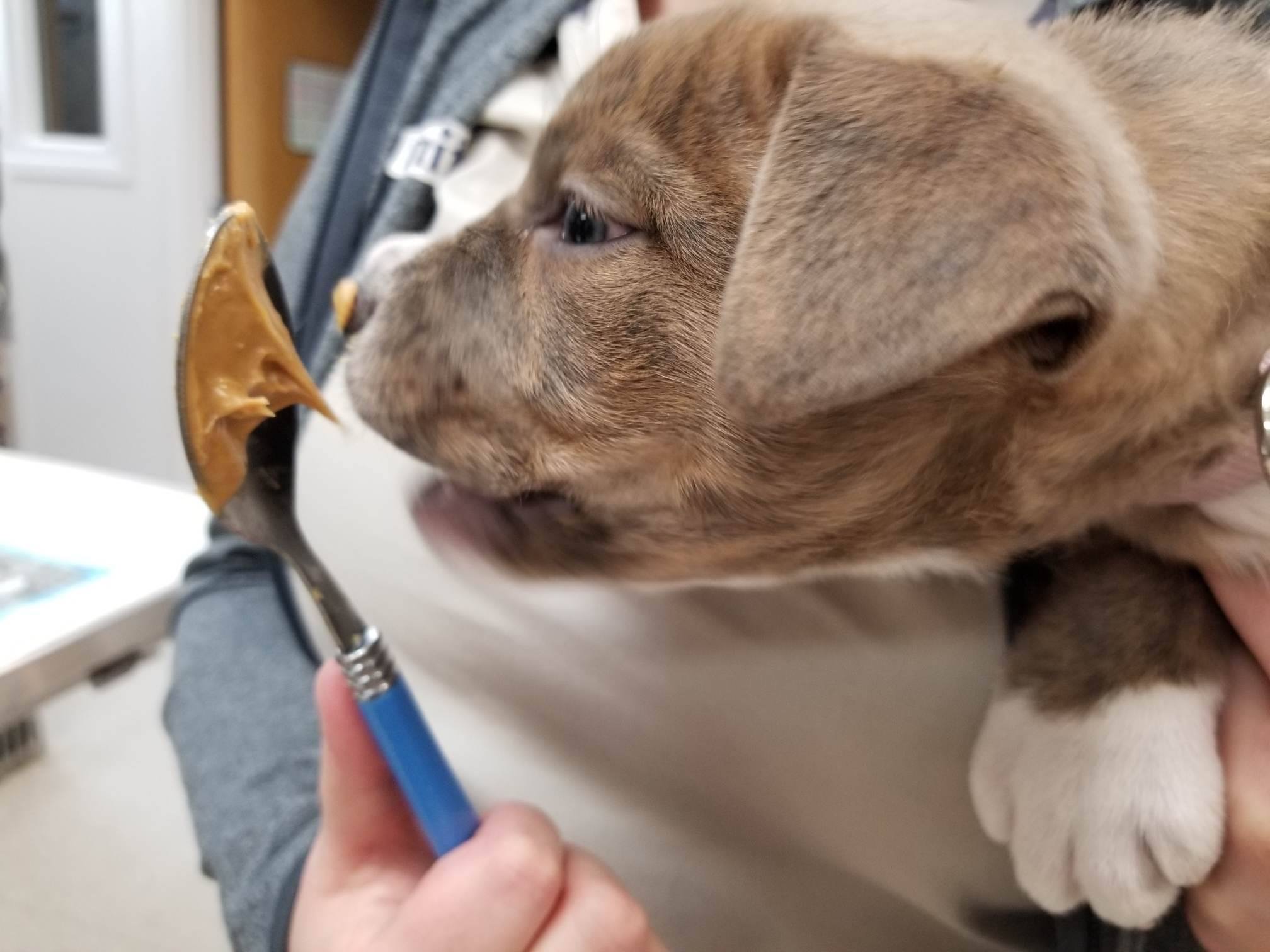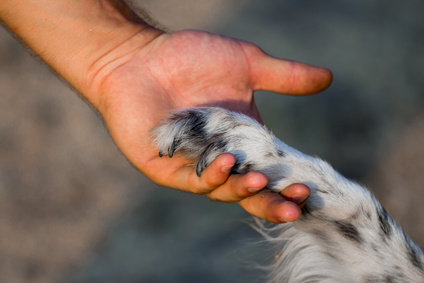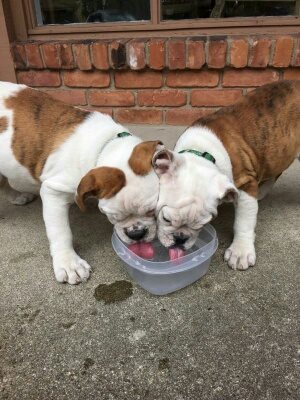Socialization Success!
Last time we described what socialization is and how it can help you have a well adjusted adult dog. This time we will talk about planning socialization to expose your puppy to new experiences gradually and safely. A little bit of planning, food, and toys can make socialization successful and fun.
What is your goal?
Paint the picture you’d like your adult dog’s behavior to reflect. When visitors come over do you want your dog to bark once or twice then sit politely while they come inside? While walking, do you want an adult dog that walks calmly and confidently next to you? Make a list and pick thee traits you would like to see your puppy grow into. Puppies are little sponges and things that we may find cute with puppies are not so cute with adult dogs. Teaching puppies good behavior from the start is easier than breaking bad habits in adults.
An example that comes to mind is the puppy lunging to greet a new person at the end of the leash, and for our example we will say a Labrador Retriever puppy. This puppy stands on his hind legs, stretching with all his might to potentially touch, and flicking his tongue in the air hoping to kiss them! It is a sight that is hard to resist. However when our lab puppy grows up, we will have an eighty pound dog trying to jump up to kiss our visitor’s face, and pulling us around in the meantime. Now our lab friend has a heavily reinforced habit that now needs to be broken.
Work with your puppy’s personality!
Puppies, just like children, have different personalities. Some parents worry that a shy child will never come out of their shell to make friends and a boisterous, outgoing child you worry about being too direct or even rude in their mannerisms.
Outgoing puppies will need more emphasis on good manners. These puppies are more likely to greet everyone by pulling against the leash and jumping, which is an acceptable way to greet their mother and littermates, not people.
More reserved puppies should never be forced to interact with anything they are frightened of! A common story is a young puppy on a walk who suddenly becomes frightened of a trash can set by the curb. Strategies for this situation include backing up to a spot your puppy feels comfortable then rewarding your puppy when they connect with you (such as eye contact, following your body’s movements). Ask for a sit and other tricks your puppy knows as you get closer to the object, or even play with your puppy’s favorite toy. It is okay for your puppy to “check-in” on the trash can, but not fixate on it. The goal is to get closer to the object while the puppy is having fun getting food for tricks or playing with their toy; rather than fixating on the object they find scary. You might not get your puppy to interact with the trash can on the first exposure but having fun things happen in its presence help lessen the puppy’s stress. The bigger the deal you make of it, and fawn over a puppy the more likely they are to act scared of it again. If time is a factor, just walk around the trash can in a wide arc or even cross the street.
I also want to make note of socialization with other animals here. Not only do you need to keep in mind your puppy’s personality, but the other pet as well. Case in point, two dogs. The older dog “tolerates” puppies until they jump or bite at him. He growls and walks away when puppy antics get too much for him. The younger dog loves puppies! He will slow down to allow them to catch up in a game of chase, and roll over for them to climb all over him. The moral of the story: Not all adult dogs enjoy puppy antics, so respect the older dog’s space!
Crowd Control
Everyone loves a cute puppy! Even though people mean well you may have to do a bit of crowd control. Have a plan in place before you have people greet your puppy. Have people wait to pet a boisterous puppy until the puppy is sitting or after doing a trick. Ask people to kneel and allow shy puppies to approach them instead of them trying to go to your puppy. One of my favorite handouts regarding this is Dr. Sophia Yin’s “How to Greet a Dog and What to Avoid.” This handout details how we as people should greet dogs and some common inappropriate manners as well. Don’t be afraid to say something if you feel someone is greeting or interacting with your puppy poorly.
Make it fun!
If we find something boring we will be less likely to do it. Turning socialization into a game will also help get the family involved, including children. You can make socialization into a scavenger hunt, a bingo game, or even a Dr. Seuss rhyme! Remember to include people, places, other animals, and objects in your game. Can your puppy meet a child with a baseball bat, a uniformed man with a hat, and blonde woman with a cat? How about a blue umbrella, a ferret in a box, or a cat in a hat? How about a wheelchair, crutches, or even a trombone? How about gravel pathways, a groovy play ground, or even an upward climbing stair case? These are examples of things that some dogs cower away from, so think outside the box.
Set your puppy up for success.
There may come a time when you’ll want to test your puppy’s mental fortitude. For example; “Can my puppy handle the extended family reunion where everyone brings their dogs, and ends with fireworks after the bonfire?” A puppy that can take a full day of new people, dogs, etc. is definitely on the road to confidence. However what if your puppy isn’t ready for this kind of day, and if not, will you be prepared?
Using the family reunion above, be prepared with treats, interactive food toys, and your puppy’s crate. If your puppy needs a breather the crate serves as a great place to take a nap, play with an interactive food toy, or just reset. If you plan on leaving your puppy while you mingle make sure they are calm before you leave. Have your crowd control plan ready and monitor play with older dogs. In the evening, when the fireworks start, make sure you and your puppy are away from the action with their favorite treat ready. If your puppy is calm you can move closer, but always remember to let the puppy set the pace. A good rule of thumb; if your puppy is too nervous to eat you are too close! Sure this year you might miss the fireworks, but the possibility of sitting with your dog by the bonfire next reunion is well worth it!
Most Importantly…
Get out there and have fun with your puppy!









Recent Comments